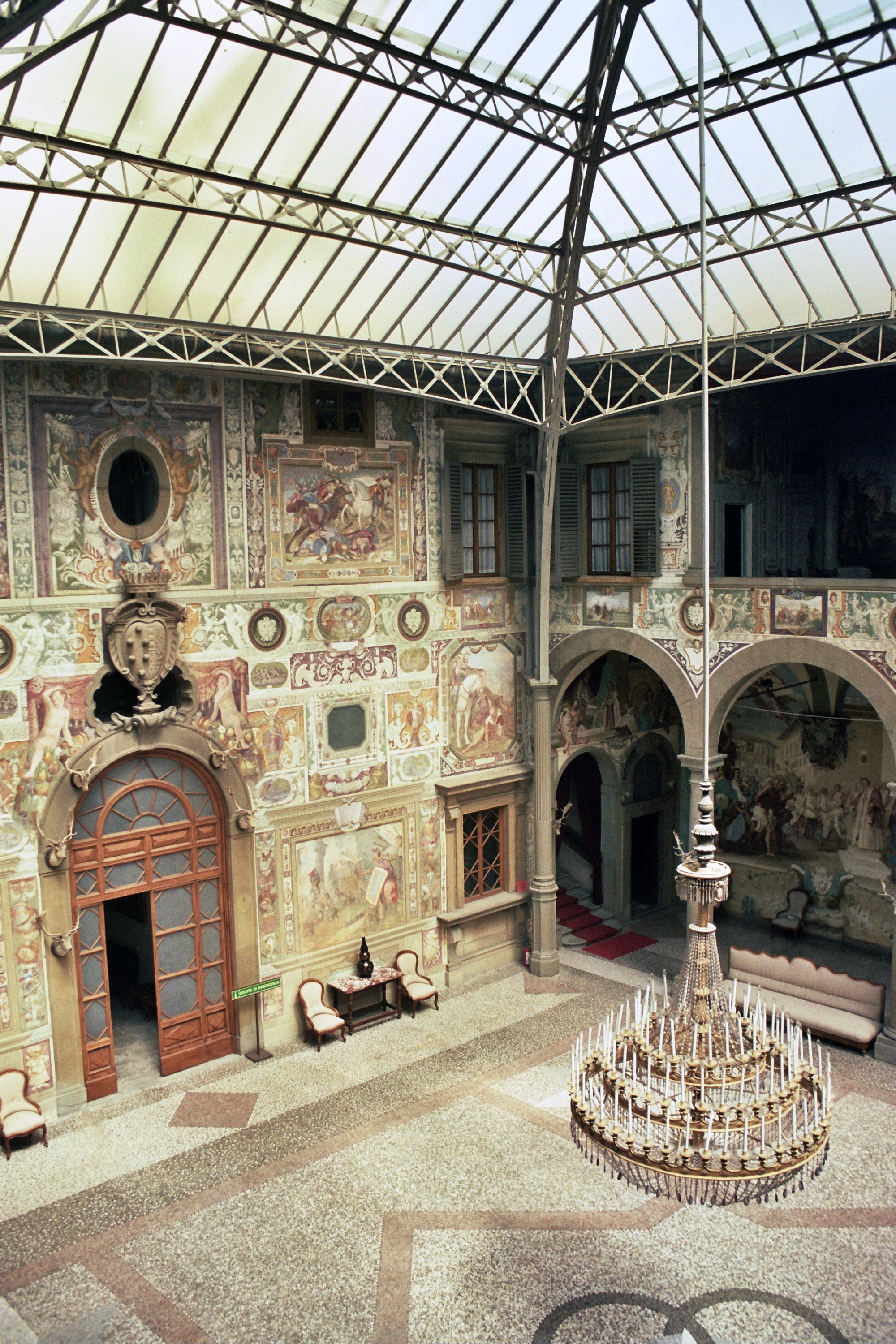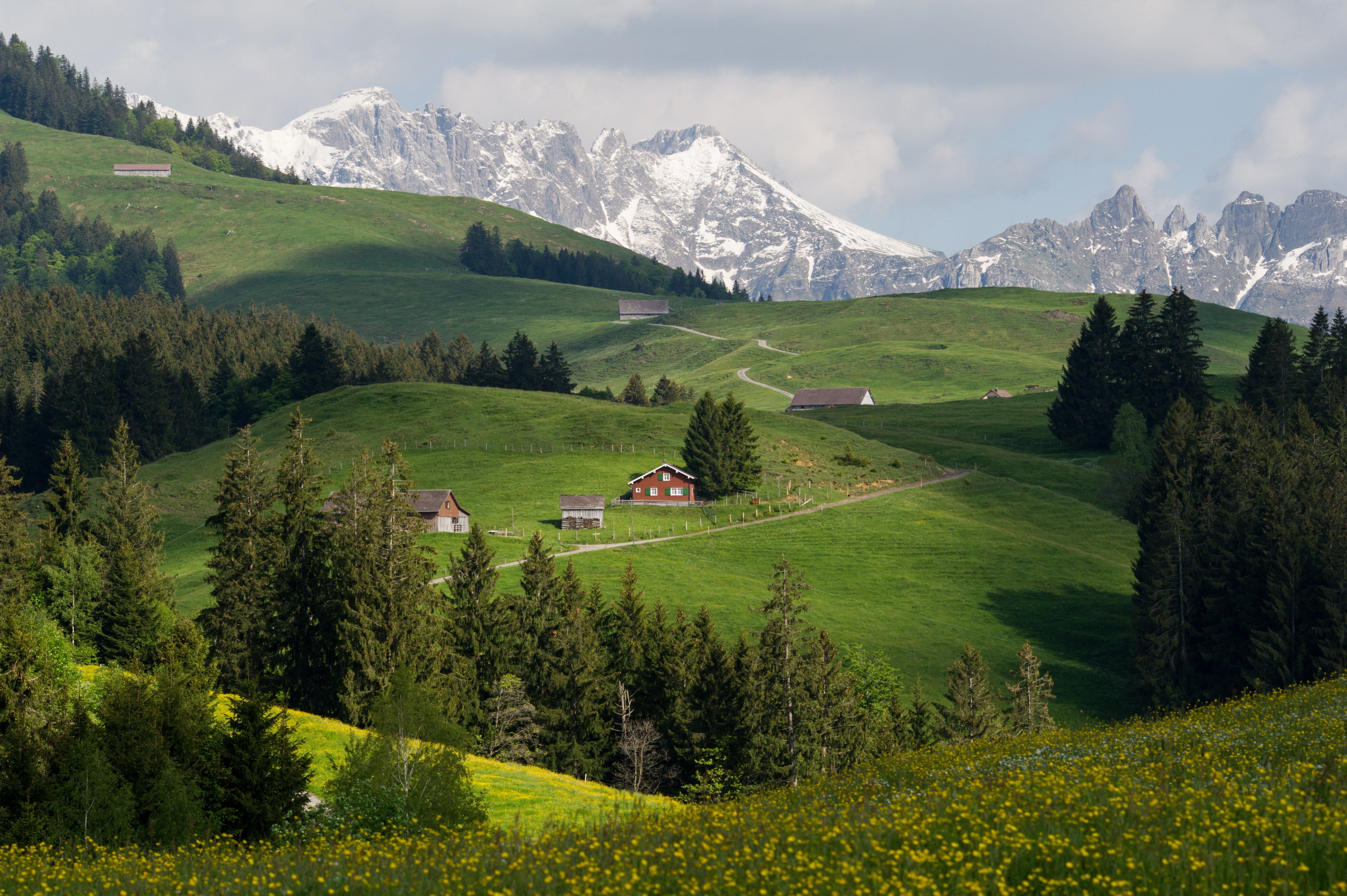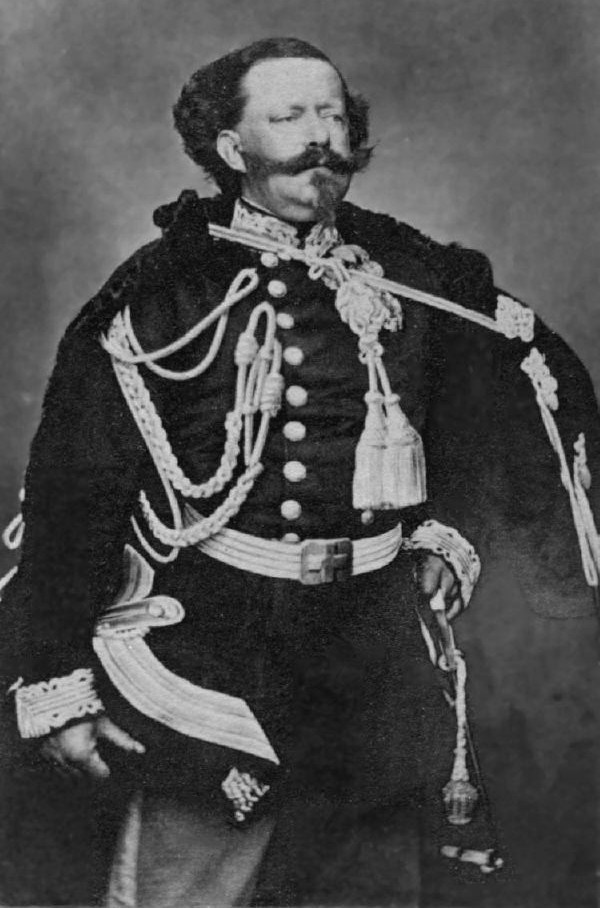|
Villa Petraia
Villa La Petraia is one of the Medici villas in Castello, Florence, Tuscany, central Italy. It has a distinctive 19th century belvedere on the upper east terrace on axis with the view of Florence. History In 1364, the "palace" of Petraia belonged to the family Brunelleschi until in 1422 Palla Strozzi bought it and expanded it by buying the surrounding land. In the first half of the sixteenth century, the villa became the property of the Salutati, who then sold the villa to Cosimo I de' Medici in 1544, who gave it to his son, Cardinal Ferdinando in 1568. Then from 1588, there was a decade of extensive excavation works which transformed the "stony" nature of the place (hence the name in Petraia, that is full of stones) into dramatic sequence of terraces dominated by the massive main building. It is traditionally attributed to Bernardo Buontalenti, even though the only documented certainty is the presence on site of Raphael Pagni. The Villa remained in the ownership of the Medic ... [...More Info...] [...Related Items...] OR: [Wikipedia] [Google] [Baidu] |
Medici Villas
The Medici villas are a series of rural building complexes in Tuscany which were owned by members of the Medici family between the 15th century and the 17th century. The villas served several functions: they were the country palaces of the Medici, scattered over the territory that they ruled, demonstrating their power and wealth. They were also recreational resorts for the leisure and pleasure of their owners; and, more prosaically, they were the centre of agricultural activities on the surrounding estates. In 2013, the Medici villas were added to UNESCO's World Heritage list. History The first Medici villas were the Villa del Trebbio and that at Cafaggiolo, both strong fortified houses built in the 14th century in the Mugello region, the original home of the Medici family. In the 15th century, Cosimo de' Medici built villas designed by Michelozzo at Careggi and Fiesole, still quite severe buildings, but with additional recreational spaces: courtyards, balconies, and gardens ... [...More Info...] [...Related Items...] OR: [Wikipedia] [Google] [Baidu] |
Romanticism
Romanticism (also known as the Romantic movement or Romantic era) was an artistic, literary, musical, and intellectual movement that originated in Europe towards the end of the 18th century, and in most areas was at its peak in the approximate period from 1800 to 1850. Romanticism was characterized by its emphasis on emotion and individualism, clandestine literature, paganism, idealization of nature, suspicion of science and industrialization, and glorification of the past with a strong preference for the medieval rather than the classical. It was partly a reaction to the Industrial Revolution, the social and political norms of the Age of Enlightenment, and the scientific rationalization of nature. It was embodied most strongly in the visual arts, music, and literature, but had a major impact on historiography, education, chess, social sciences, and the natural sciences. It had a significant and complex effect on politics, with romantic thinkers influencing conservatism, libe ... [...More Info...] [...Related Items...] OR: [Wikipedia] [Google] [Baidu] |
Landscape Design History
A landscape is the visible features of an area of land, its landforms, and how they integrate with natural or man-made features, often considered in terms of their aesthetic appeal.''New Oxford American Dictionary''. A landscape includes the physical elements of geophysically defined landforms such as (ice-capped) mountains, hills, water bodies such as rivers, lakes, ponds and the sea, living elements of land cover including indigenous vegetation, human elements including different forms of land use, buildings, and structures, and transitory elements such as lighting and weather conditions. Combining both their physical origins and the cultural overlay of human presence, often created over millennia, landscapes reflect a living synthesis of people and place that is vital to local and national identity. The character of a landscape helps define the self-image of the people who inhabit it and a sense of place that differentiates one region from other regions. It is the dynamic b ... [...More Info...] [...Related Items...] OR: [Wikipedia] [Google] [Baidu] |
Cultural Landscapes
Cultural landscape is a term used in the fields of geography, ecology, and heritage studies, to describe a symbiosis of human activity and environment. As defined by the World Heritage Committee, it is the "cultural properties hatrepresent the combined works of nature and of man" and falls into three main categories: # "a landscape designed and created intentionally by man" # an "organically evolved landscape" which may be a "relict (or fossil) landscape" or a "continuing landscape" # an "associative cultural landscape" which may be valued because of the "religious, artistic or cultural associations of the natural element." Historical development The concept of 'cultural landscapes' can be found in the European tradition of landscape painting. From the 16th century onwards, many European artists painted landscapes in favor of people, diminishing the people in their paintings to figures subsumed within broader, regionally specific landscapes.GIBSON, W.S (1989) Mirror of the E ... [...More Info...] [...Related Items...] OR: [Wikipedia] [Google] [Baidu] |
Villas In Florence
{{disambiguation, geo ...
Villas may refer to: Places * Villas, Florida, United States * Villas, Illinois, United States * Villas, New Jersey, United States * Las Villas, a region of Spain * Las Villas (Cuba), a former Cuban Province * The Villas, a housing estate in Stoke-upon-Trent, England Other uses * Villa, a type of house * ''Villa'' (fly), a genus of insects * The Villas (band), an American rock band * Violetta Villas (1938–2011), Belgian-born Polish singer, actress, and songwriter See also *Las Tres Villas *Cinco Villas (other) *Castillo Siete Villas, a town in Arnuero, Cantabria, Spain *Villasbuenas *Villas Boas *Benalúa de las Villas *Villa (other) *Vila (other) *Vilas (other) Vilas may refer to: People ;Last name * Vilas Nande (fl.2000), musician * Charles Nathaniel Vilas (died 1931), American philanthropist in New Hampshire for whom the Vilas Bridge was named *Dane Vilas (born 1985), South African cricketer *Faith Vil ... [...More Info...] [...Related Items...] OR: [Wikipedia] [Google] [Baidu] |
Museo Di Firenze Com'era
Museo di Firenze com'era ("Museum of Florence as it was") was a history and archaeology museum, one of the civic museums of the city of Florence. The museum was located on Via dell'Oriuolo in a former convent of the Oblates. It closed permanently in October 2010 to make space for the enlargement of the Biblioteca delle Oblate. Some of its exhibits will be incorporated into a new City museum portraying Florence through the ages, to be housed in Palazzo Vecchio. The museum's collections included the 14 surviving paintings of Medici villas by Giusto Utens Giusto Utens or Justus Utens (died 1609) was a Flemish painter who is remembered for the series of Medicean villas in lunette form that he painted for the third Grand Duke of Tuscany, Ferdinando I, in 1599–1602. He moved to Carrara about 15 .... These were transferred in 2014 to a new permanent gallery at Petraia Villa Medici. References External links Website of Florence Civic Museums Art museums and galleries in ... [...More Info...] [...Related Items...] OR: [Wikipedia] [Google] [Baidu] |
Giusto Utens
Giusto Utens or Justus Utens (died 1609) was a Flemish painter who is remembered for the series of Medicean villas in lunette form that he painted for the third Grand Duke of Tuscany, Ferdinando I, in 1599–1602. He moved to Carrara about 1580, where he married, and where later he returned and died. Medici villas The Medici villas illustrated by Utens from a bird's-eye perspective are: * Villa Medici del Trebbio *Villa Medicea di Cafaggiolo *Palazzo Pitti, the Boboli Gardens and Fort Belvedere * Villa Medici di Castello * Villa Medici La Petraia *Villa di Pratolino * Villa Medicea L'Ambrogiana *Villa di Lappeggi * Villa di Poggio a Caiano * Villa di Serravezza * Villa La Magia * Villa Di Marignolle * Villa di Montevettolini * Villa di Colle Salvetti The three missing lunettes are thought to be the Villa di Artimino and perhaps the Villa Medici di Careggi. In the early twentieth century an anonymous artist completed the scheme, based on eighteenth-century ''vedute'' illustr ... [...More Info...] [...Related Items...] OR: [Wikipedia] [Google] [Baidu] |
Victor Emmanuel II Of Italy
en, Victor Emmanuel Maria Albert Eugene Ferdinand Thomas , house = Savoy , father = Charles Albert of Sardinia , mother = Maria Theresa of Austria , religion = Roman Catholicism , image_size = 252px , succession1 = King of Sardinia and Duke of Savoy , reign1 = 23 March 1849 – 17 March 1861 , predecessor1 = Charles Albert , reg-type1 = , regent1 = , signature = Signatur Viktor Emanuel II..PNG Victor Emmanuel II ( it, Vittorio Emanuele II; full name: ''Vittorio Emanuele Maria Alberto Eugenio Ferdinando Tommaso di Savoia''; 14 March 1820 – 9 January 1878) was King of Sardinia from 1849 until 17 March 1861, when he assumed the title of King of Italy and became the first king of an independent, united Italy since the 6th century, a title he held until his death in 1878. Borrowing from the old Latin title ''Pater Patriae'' of the Roman emperors, the Italians gave him the epithet of '' Father of the Fatherland'' ( it, Padr ... [...More Info...] [...Related Items...] OR: [Wikipedia] [Google] [Baidu] |
Leopold II, Grand Duke Of Tuscany
Leopold II( it, Leopoldo Giovanni Giuseppe Francesco Ferdinando Carlo, german: Leopold Johann Joseph Franz Ferdinand Karl, English: ''Leopold John Joseph Francis Ferdinand Charles''. (3 October 1797 – 29 January 1870) was Grand Duke of Tuscany from 1824 to 1859. He married twice; first to Maria Anna of Saxony, and after her death in 1832, to Maria Antonia of the Two-Sicilies. By the latter, he begat his eventual successor, Ferdinand. Leopold was recognised contemporarily as a liberal monarch, authorising the Tuscan Constitution of 1848, and allowing a degree of press freedom. The Grand Duke was deposed briefly by a provisional government in 1849, only to be restored the same year with the assistance of Austrian troops, who occupied the state until 1855. Leopold attempted a policy of neutrality with regard to the Second Italian War of Independence, but was expelled by a bloodless coup on 27 April 1859, just before the beginning of the war. The Grand Ducal family left for B ... [...More Info...] [...Related Items...] OR: [Wikipedia] [Google] [Baidu] |
Florence
Florence ( ; it, Firenze ) is a city in Central Italy and the capital city of the Tuscany region. It is the most populated city in Tuscany, with 383,083 inhabitants in 2016, and over 1,520,000 in its metropolitan area.Bilancio demografico anno 2013, datISTAT/ref> Florence was a centre of medieval European trade and finance and one of the wealthiest cities of that era. It is considered by many academics to have been the birthplace of the Renaissance, becoming a major artistic, cultural, commercial, political, economic and financial center. During this time, Florence rose to a position of enormous influence in Italy, Europe, and beyond. Its turbulent political history includes periods of rule by the powerful Medici family and numerous religious and republican revolutions. From 1865 to 1871 the city served as the capital of the Kingdom of Italy (established in 1861). The Florentine dialect forms the base of Standard Italian and it became the language of culture throughout Ital ... [...More Info...] [...Related Items...] OR: [Wikipedia] [Google] [Baidu] |
Bernardo Buontalenti
Bernardo Buontalenti (), byname of Bernardo Delle Girandole ( 1531 – June 1608), was an Italian stage designer, architect, theatrical designer, military engineer and artist and inventor of italian ice cream. Biography Buontalenti was born in Florence. He entered the service of the Medici as a youth and remained with them the rest of his life. He is said to have been instructed in painting by Salviati and Bronzino, in sculpture by Michelangelo Buonarroti, in architecture by Giorgio Vasari, and in miniature painting under Giulio Clovio. He executed a number of miniatures for Francesco, the son of Cosimo I. More than a painter, he was celebrated as an architect; in this role he was much employed in the design of fortifications, villas, and gardens and is considered one of the most important architects of the Mannerist period. He was also a great mechanic, and an excellent mathematician. In 1562 he travelled to Spain. His first known work is from 1568, the Palazzo di Bianca Ca ... [...More Info...] [...Related Items...] OR: [Wikipedia] [Google] [Baidu] |
Cosimo I De' Medici
Cosimo I de' Medici (12 June 1519 – 21 April 1574) was the second Duke of Florence from 1537 until 1569, when he became the first Grand Duke of Tuscany, a title he held until his death. Life Rise to power Cosimo was born in Florence on 12 June 1519, the son of the famous condottiere Ludovico de' Medici (known as Giovanni delle Bande Nere) and his wife Maria Salviati, herself a granddaughter of Lorenzo the Magnificent. He was the grandson of Caterina Sforza, the Countess of Forlì and Lady of Imola. Cosimo came to power in 1537 at age 17, just after the 26-year-old Duke of Florence, Alessandro de' Medici, was assassinated. Cosimo was from a different branch of the Medici family, descended from Giovanni il Popolano, the great-grandson of Giovanni di Bicci de' Medici, founder of the Medici Bank. It was necessary to search for a successor outside of the "senior" branch of the Medici family descended from Cosimo di Giovanni de' Medici, since the only male child of Alessandro, ... [...More Info...] [...Related Items...] OR: [Wikipedia] [Google] [Baidu] |









.jpg)